74th General Hospital Unit History

Illustration showing overall organization of the 74th General Hospital, as taken from the 1944 Annual Report of the unit.
Introduction & Activation:
The 74th General Hospital was officially activated on 31 August 1942 at Camp Atterbury, Columbus, Indiana (Division Training Camp; acreage 40,513; troop capacity 2,243 Officers & 41,916 Enlisted Men –ed). The cadre consisted of one Medical Officer and administrative personnel from Fort McClellan, Anniston, Alabama (Infantry Replacement Training Center -ed) and a group of Hospital Technicians from Billings General Hospital, Fort Benjamin Harrison, Indianapolis, Indiana (Finance Replacement Training Center –ed). The Commanding Officer was Colonel Hyman I. Teperson, who joined the unit on 17 September.
The mission of the Hospital was to provide General Hospital care for patients evacuated from hospitals in the forward echelon and also for patients originating in units stationed in the vicinity of the medical installation.
By the end of October 1942, the unit totaled 2 Officers and 62 Enlisted Men and was ordered to New Orleans Port of Embarkation. There, additional Enlisted personnel brought the unit up to its full T/O strength, with Medical Administrative Corps and Quartermaster Corps Officers also being assigned. The unit then embarked upon a period of intensive training.
Training:
All personnel were assigned for training to the Station Hospital, with a number of Medical, Surgical, Laboratory and X-Ray Technicians being sent to special Schools. Men in other, more specialized departments (such as transportation, administrative and mess) also received special instruction.
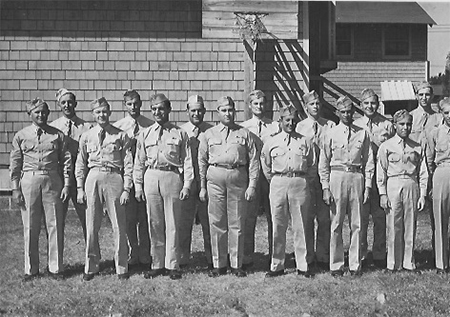
April-May 1943, group of personnel of the 74th General Hospital photographed while in training at Fort Jackson, Columbia, South Carolina, Zone of Interior.
On 1 April 1943, the organization was ordered to Fort Jackson, Columbia, South Carolina (Infantry Training Center –ed) where individual and unit training was continued in preparation for the day when the unit would be called upon to perform its tasks.
On 2 April 1943, the unit was authorized a distinctive insignia as provided under paragraph 5, AR 600-40. It is described as follows:
Upon and over a gold sunburst (neutral colors) issuant from a maroon scroll with the motto “Health through Science” in gold lettering, a silver x-ray tube entwined with a maroon serpent.
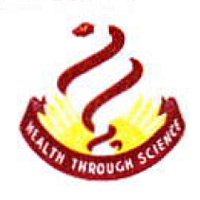
Sample of the official 74th General Hospital Distinctive Insignia, approved on 2 April 1943.
The beginning of 1944 found the unit still staging at Fort Jackson. All T/O vacancies amongst Officer and Enlisted personnel were filled during the first two months of the new year. Warning Orders were received and all was in readiness.
Preparation for Overseas Movement:
Movement to the New York Port of Embarkation began on 16 February 1944 by rail with the unit arriving at Camp Kilmer, New Jersey at 2000 hours on 17 February 1944. The unit remained in staging at the camp until 1 March 1944 when, at 0200, its personnel arrived at and boarded RMS “Queen Mary”, which would act as their transport to the United Kingdom. The anchor was weighted at 1200 and the ship set sail the same day.

Left: Tyntesfield, Somerset, England, 1944. Review and parade of Medical Officers (Doctors & Dentists) of the 74th General Hospital.
Right: Tyntesfield, Somerset, England, 1944. Review and parade of Army Nurse Corps Officers (Nurses) of the 74th General Hospital.
1944:
The unit arrived in the United Kingdom via the Firth of Clyde, Scotland, following an uneventful crossing of the Atlantic on 7 March 1944. Upon completion of debarkation the following day, the unit was transported, again by rail, to its staging area at Hoylake, Cheshire.
On 6 April 1944 Detachment “A” of the unit departed for Northern Ireland to relieve the 7th Field Hospital in the operation of a 150-bed Station Hospital (per paragraph 1, Movement Orders No. 642, Headquarters, Western Base Section dated 30 March 1944), with the balance of the unit remaining in staging until 8 May.
The Detachment consisted of 13 Officers, 9 Nurses and 97 Enlisted Men, with Lieutenant Colonel Holcombe H. Hurt, MC (O-326697) as the Commanding Officer. The Station Hospital was located in the village of Benburb and was situated in an old mansion house above the valley of the Blackwater River. A nearby house served as the Nurses’ quarters while the Enlisted Men were billeted in the homes of the local inhabitants.
The operation of a hospital in the ETO was a new experience for this Detachment, and the lessons learned in every department served to prepare each of the personnel for the performance of his duties when the General Hospital would be ready to operate under full capacity. An outpatient clinic served several surrounding units with dental, medical and surgical attention. Although the total number of patients treated was never very large, a wide variety of medical and surgical conditions were represented among them.
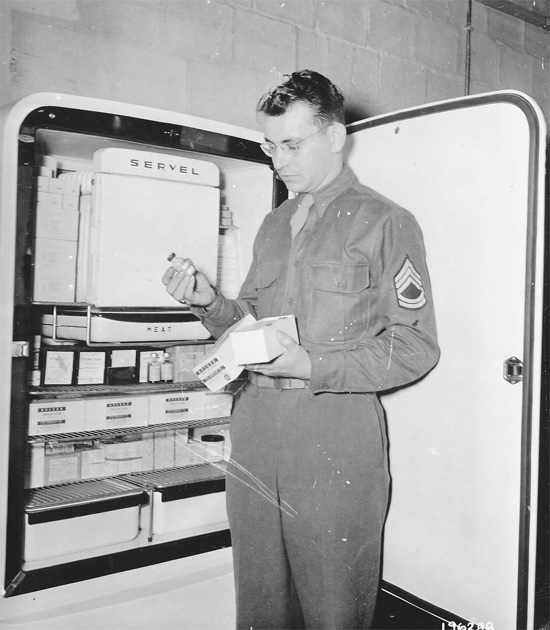
3 November 1944, Tyntesfield, Somerset, England. Technical Sergeant Edwin S. Dressel, in charge of the 74th General Hospital’s Pharmacy, takes a unit of penicillin from the refrigerator.
On 8 May 1944, the unit was ordered to relieve and replace the 56th General Hospital, under the command of Lieutenant Colonel Daniel Sheehan, in the operation of Hospital Plant #4165 (Tyntesfield, Somerset –ed). Formal transfer was made on 10 May, with Detachment “A” re-joining the remainder of the command in its new location on 30 May 1944. At the time of transfer, 437 patients were in the Hospital, but their treatment was uninterrupted due to an overlap of several days in the transfer of units.
The facilities at the Hospital Plant were good, and much better than the tented training that the unit had encountered in the Zone of Interior. The Plant was of the BOLERO type, and consisted of 103 buildings, each of brick and tile construction accommodating a total of 750 patients at any one time. A great deal of construction in the form of covered walks, drainage channels and ward equipment had been added by the 56th Gen Hosp, as well as numerous bed expansions (in readiness for D-Day) by the erection of 30 Hospital Ward Tents (erected in a total of 10 days). Flooring was added in the new wards with cement blocks being evenly laid out on a sand foundation. Cement walks were then laid out and connected the tents to their main wards in the brick buildings. Pyramidal Tents were also erected to house bucket latrines, but these were never used.
Baggage facilities were likewise expanded but in the end proved unnecessary as battle casualties, in nearly every instance, arrived without any baggage. The situation was completely reversed when the unit operated as a Holding Hospital for patients ready to be transported to the Zone of Interior.
A covered walk on the surgical side of the plant was almost completed on arrival, but since then additional covered walks were provided for the medical side too. In all, some 3530 feet of covered walks were thus constructed. Many existing roads were equally improved. A semi-circular road approach leading to the surgical enclosed walk was built to facilitate and expedite the unloading of ambulances. All single doors on the enclosed ramp were also widened to accommodate litter patients. A brick projection room was constructed as an addition to the existing theater, which not only eliminated the existing fire hazard but incidentally made possible the addition of 100 sets within the theater.
The grounds occupied by the Hospital comprised approximately fifty acres. Due to manpower shortage, rapidly growing grass and weeds created a real program. Broken stone and bricks discarded by the builders were strewn everywhere ruining horse-drawn mower blades and utensils kindly loaned by the local residents. It was necessary to clean up the grounds first, but with patience and goodwill the ground was gradually turned over and planted with regular lawn grass. Some landscaping followed, with the planting of flower beds to add some color to the area. Water was supplied from wells at Chelvey, where it was also chlorinated. Two storage tanks were set up so that in case of destruction of the Bristol main, water could be pumped from the tanks in order to supply the Hospital. In general the quality of the water was good.

Left: Tyntesfield, Somerset, England, winter 1944-45. Second Lieutenant Margaret McLain (ANC) in front of hutment no. 101, struggles with her bike in heavy snow.
Right: Tyntesfield, Somerset, England, winter 1944-45. Ward tents of the 74th General Hospital covered with snow. Although having been winterized, they offered limited comfort during severe weather conditions.
With the coming of cold weather, it was necessary for the unit to winterize the Ward Tents. This was accomplished by the installation of a fiber wall on a wooden framework along the inner surface of the tent apron. Small vestibules were also constructed at the entrances. Glass windows in the doors permitted sufficient daylight to enter the tent and eliminated the perpetual blackout which exists in tents without windows. An innovation which proved most satisfactory was the erection of two Ward Tents side by side as a single unit. The adjoining side walls of the tent were fastened together with ropes through their opposing grommets. This adjoining partition rose to a height of approximately six feet above the floor. The resultant effect was one of spaciousness; thirty beds could be accommodated in three rows of ten with the middle row beneath the junction of the two tents. This left two wide aisles for easy passage. The joining of Ward Tents in this way also saved on winterizing material. To winterize two tents individually required 264 feet of wall space; when the tents were combined as described, it took only 164 feet, thus saving 37% of material.
Towards the end of 1944, many lighting restrictions were eliminated by the local authorities. Electric lights were installed along the covered walks in conformity with existing regulations. Quarters for Officers, Nurses and Enlisted Men were provided for each group in separate barracks. The accommodation was often crowded, but adequate.
Three messes were operated, all using the cafeteria style of service. The Officers’ and Nurses’ messes were combined, resulting in economy of space and personnel. The Detachment mess required physical readjustment in order to expedite the serving of food. The notorious American habit of eating rapidly compensated for lack of seating space!
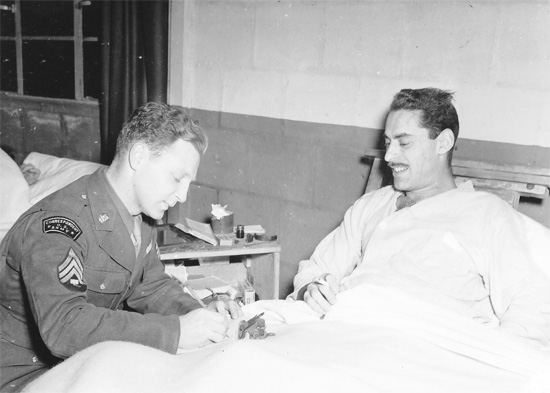
4 November 1944, Tyntesfield, Somerset, England. US War Correspondent Technician 4th Grade Marvin Levin, interviews his closest friend, Staff Sergeant George J. Bernstein, ASN 32193285, at the 74th General Hospital in England. The patient, second-in-command of a Medium Tank Platoon pertaining to C Company, 741st Tank Battalion, is recovering from shrapnel wounds received on 14 September 1944 when his armored vehicle was fired on passing through some of the Siegfried Line defenses near Aachen, Germany. Additional data courtesy Sue Porter.
The first trainload of patients was received on D-Day + 6 (12 June 1944). Subsequent Hospital Trains arrived on 23 and 28 June, 14 and 16 July, 2, 14 and 26 August, 21 and 23 September, 8 and 23 October and 18 and 29 November. A total of 4,167 patients were received by train, of which 2,823 were battle casualties, 870 disease and 474 were injuries. The trains arrived at Temple Meads station (Bristol, England), approximately 7 miles from the Hospital’s location. Through the co-operation of the Medical Officer of Health of Bristol, Dr. R. H. Perry, sufficient Air Raid Precaution ambulances were loaned to the unit which permitted the transportation of all litter cases in a single trip. In addition to the above activities, various military organizations stationed in the vicinity were serviced by the unit as a kind of Station Hospital. As of 2 December 1944 the 74th General was designated as a “Holding Hospital” for patients being returned to the Zone of Interior from the III Hospital Group. This change-over in function would lead to a marked decline in the work of the operating rooms, x-ray and clinical laboratories and a marked increase in the work of the administrative branch.
Admissions:
| From Command | 229 |
| Hospital Train | 4166 |
| Boarded for ZI | 1639 |
| 56th General Hospital | 416 |
| Others | 1890 |
| Total | 8340 |
| Average Daily Admissions | 36 |
Dispositions:
| To Duty | 3254 |
| Transferred | 2014 |
| To Zone of Interior | 1935 |
| AWOL | 8 |
| Died | 10 |
| Dead on Arrival | 3 |
| Total | 7224 |
| Average Daily Dispositions | 31 |
| Highest Census: 30 December 1944 | 1287 |
| Lowest Census: 11 June 1944 | 315 |
| Outpatient Visits | 5081 |
| Outpatient Treatments | 7725 |

Official sign identifying the 74th General Hospital site and plant # 4165 at Tyntesfield, Somerset, United Kingdom, where the unit was stationed from 10 May 1944 to 21 May 1945.
Organization:
From the time of taking over the patients from the 56th General Hospital until the end of December 1944, the unit’s operation was divided roughly in three different phases.
- from 11 May 1944 to 6 June 1944 – Function as a Station and General Hospital. During this stage the service shook down into a workable organization, with both staff and personnel becoming familiar with ETOUSA medical records and routine procedures, as well as the functioning of the Hospital in general. Patient load was still light and mainly consisted of the same type of cases seen in a Station Hospital in the States.
- from 6 June 1944 to 1 December 1944 – Function as a Hospital for Treatment of Battle Casualties. After arrival of the first trainload of casualties from France on 12 June 1944, the surgical services were very active and busy (to support the extra weight of work, 4 Officers from the Medical Service were attached to Surgery). For the first weeks of this period, the assistant Chief of Service and one Ward Officer were on DS serving on board LSTs. This left an exceptionally heavy patient load on the personnel left on the service, and 2 qualified Surgeons had to be borrowed from another hospital being staged nearby. Those 2 Officers were of great help. The types of casualties and the stage of their treatment varied with the progress of the war on the continent. Shortly after D-Day, patients received were more severely wounded and had had less definitive care upon reaching the 74th General Hospital than was the case later on.
- from 1 December 1944 to 31 December 1944 – Function as a Holding Hospital. About 1 December the Hospital was officially designated a Holding Hospital for patients which had been boarded for the Zone of Interior. No more trainloads of patients were received from then on, and consequently surgical activities dropped off to almost nothing. Although the wards were full, the work consisted mainly of checking records and clothing, and seeing to it that the patient was in condition to be transported to the States. There were quite a number of casts to be changed and a few amputation stumps to be reviewed, but these conditions were largely remedied by the attending personnel.
The Hospital was not designated as a center for the treatment of any special types of case, and except for the ZI-bound cases, transfers from other organizations were very low. Conversely, the policy was to evacuate patients requiring chest or neuro-surgery to other hospitals better equipped and staffed to handle these specific cases.
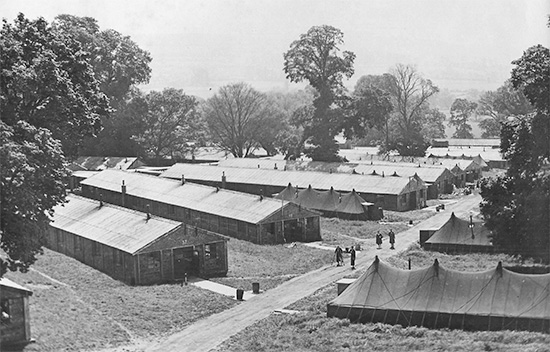
Partial aerial view of the grounds illustrating the hutments and tents occupied by the 74th General Hospital (Hospital Plant # 4165) while stationed at Tyntesfield, Somerset England. Courtesy Gregory Sobieski.
The organization during its time in England consisted of: 1 Lieutenant Colonel, 4 Majors, 2 Captains and 4 1st Lieutenants. These Officers had received adequate training either in Station Hospitals or General Hospitals in the ZI and were, consequently, acquainted in their special duties. In general, the Chiefs of Section had adequate medical background. From May to December 1944, 4 of the Officers had the opportunity of taking special courses on detached service. One Junior Officer volunteered for frontline duty. He was wounded in action and reassigned on limited duty to the 74th General Hospital. The services consisted of 15 wards with 480 beds.
The Service was divided into sections as follows:
- General Surgery
- Orthopedic Surgery and Physiotherapy
- Genito-Urinary Surgery
- EENT Surgery
- Anesthesia and Operating Pavilion
Prior to leaving for overseas, the Enlisted personnel had received both theoretical and practical training in hospitals in the United States. A special effort was made to continue practical training while stationed in the United Kingdom. The men were able to perform many of the technical nursing duties in a most satisfactory way and showed an interest in their work and an eagerness to learn.
Weekly conferences were held for the professional staff of each section, where pathological demonstrations were given, or cases were presented. In addition to these conferences, the Medical Service also held weekly conferences for the presentation of medical cases or for a review of the literature on certain subjects. The Officers were also given the opportunity of attending a weekly clinical pathological conference at the University of Bristol. The medical library of that instruction was also open to the Medical Officers.
Review of Cases:
The type of cases seen during the 74th Gen Hosp’s operation in the United Kingdom differed in no way from that seen in any General Hospital. Acute upper respiratory infections were predominant in the spring, decreasing in the summer and then once again increasing over the winter period. Atypical pneumonias were also relatively common the reverse being the case with bacterial pneumonias. It was also discovered that catarrhal bronchitis and laryngitis were more resistant to treatment in the climate of the United Kingdom.
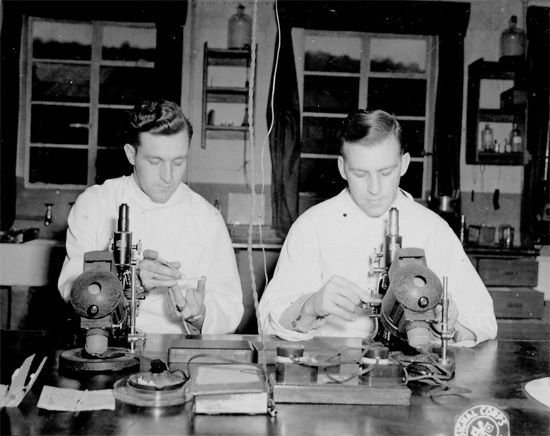
4 November 1944, Tyntesfield, Somerset, England. From L to R: Lab Technicians Private First Class John Roberts and Sergeant Spencer W. Arnold, both from Wilkes-Barre, Pennsylvania, use powerful microscopes to study blood samples obtained from battle casualties evacuated from France.
General Medical:
There were 29 cases of acute hepatitis and 11 cases of meningococcal meningitis (with no mortality). Only a small number of cases of trench foot were treated in the Hospital. Duodenal ulcer was the principal organic disease of the gastro-intestinal tract encountered. There were only two cases of gross hemorrhage and none of perforation or obstruction. A total of 73 patients with malaria were treated at the Hospital. The average number of recurrences was 7, varying from 1 to 20. Only 2 of these men had not been in the African Theater, although a number had their first attack in England.
Neuropsychiatric:
Of all the Medical services, the Neuropsychiatric Section experienced the greatest number of patients and had a fairly large consultation service in the past period operation. The Chief of the Section (a Major) and a First Lieutenant comprised the Officer personnel. The ward personnel were supervised by psychiatry-trained Charge Nurses.
Since the Hospital served as a Station Hospital for troops in the surrounding area as well as a treatment center for casualties after D-Day, two general types of patients were seen in the main; those coming from local units who had not been in battle were largely chronic neurotics, emotionally unstable, mentally deficient, or otherwise inadequate soldiers, with an occasional psychotic or organic neurological case. The group of battle casualties were predominantly acute anxiety states – combat exhaustion – but representatives of all the aforementioned conditions were seen in patients evacuated from the Continent. A listing of the most common admission diagnoses, and final diagnoses is shown below:
| Total Number of Admissions (10 May to 31 December 1944) |
||
| Diagnosis | Number | % |
| Psychoneurosis, Anxiety State | 163 | 32 |
| Combat Exhaustion | 83 | 15 |
| Constitutional Psychopathic State | 69 | 12 |
| Psychoneurosis, Conversion Hysteria | 52 | 10 |
| “Blast Concussion” and other: | ||
| Psychoneurosis, Conversion Hysteria | 47 | 9 |
| Psychoneurosis, Mixed Type, Reactive | 29 | 5 |
| Depression, etc. | 25 | 5 |
| Epilepsy | 10 | 2 |
| Mental Deficiency | 6 | 1 |
| Others | 42 | 9 |
| Total Admissions | 526 | 100 |
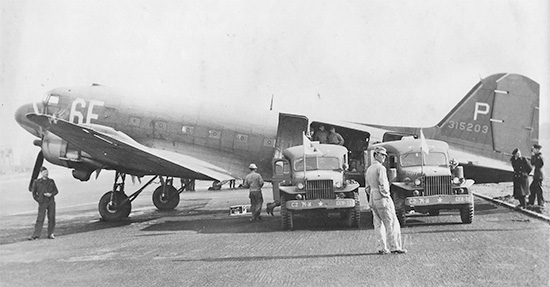
Two WC-54 ambulances deliver their load of patients in need of additional hospitalization for air evacuation to the Zone of Interior. At the time (December 1944) the 74th General Hospital was operating as a Holding Hospital preparing patients for transfer to the United States (of particular interest are the vehicles’ markings, with CZ 74M designating Communications Zone). Courtesy Gregory Sobieski.
| Total Number of Discharges (10 May to 31 December 1944) |
||
| Diagnosis | Number | % |
| Psychoneurosis, Anxiety State | 285 | 55 |
| Psychoneurosis, Conversion Hysteria | 47 | 9 |
| Psychoneurosis, Mixed Type | 43 | 9 |
| Psychoneurosis, Reactive Depression, Hypochondriasis, etc | 10 | 2 |
| Constitutional Psychopathic State | 54 | 10 |
| Dementia Praecox | 15 | 3 |
| Psychosis, Unclassified, etc. | 14 | 3 |
| Neurological Lesions | 16 | 3 |
| Mental Deficiency | 8 | 2 |
| Mental Deficiency | 7 | 1 |
| Acute Alcoholism | 6 | 1 |
| No NP Disease | 7 | 1 |
| Others | 3 | 1 |
| Total Discharges | 515 | 100 |
In addition to the routine psychotherapeutic interviews, occupational therapy and general ward care and observation, several specialized chemotherapeutic techniques were used. After suitable periods of therapy, patients were disposed of in one of the following ways:
- Reassignment and return to non-combat duty
- Transfer to another hospital for further therapy
- Transfer to another hospital for custodial care, in the case of psychotics
- Evacuation to a hospital in ZI for prolonged treatment.
Very few patients returned to their original combat units.

3 November 1944, Tyntesfield, Somerset, England. Private First Class Benjamin D. Dowis, 21, plays the piano at the A.R.C. Club of the 74th General Hospital. Two other convalescing patients; Private First Class Henry C. Cuneo (left), wounded by an enemy sniper near the Franco-Belgian border, and Private Fountain Christian (right), a gunner with an antiaircraft artillery unit wounded by shrapnel in the Moselle River valley, France. All three patients were evacuated from the continent for further treatment in the United Kingdom.
Dermatology & Venereal Disease:
These two sections were combined and consisted of one 32-bed ward and a group of consultation and treatment rooms. These were used jointly for examination and treatment of all patients seen for the combined sections. The general treatment of severe dermatological conditions was somewhat hampered by the lack of control of the physical agents utilized in therapy of these conditions (x-ray and ultraviolet irradiation).
All patients admitted to the ward were given routine CBC, Kahn and urine tests before treatment. Those investigated for venereal disease were routinely tested by Frei and Santoux intradermal techniques. All established cases of syphilis were further subjected to examination of spinal fluid (for cell count, quantitative globulin, sugar, chlorine and total protein content), quantitative Kahn procedures on blood serum, fluoroscopy of heart and great vessels, and blood chemistry studies, prior to initiation of treatment.
Penicillin treatment in acute infectious syphilis made an approximate 60% saving in man days lost from this disease. The response to treatment penicillin was carefully watched and became an area of great interest. In about 20% of the cases of late primary and secondary syphilis, the lesions were not completely healed at the termination of the course of treatment. Approximately 80% of all patients under treatment for early syphilis developed a Herxheimer reaction of greater or less degree following the third injection of penicillin totaling 120,000 units. No serious reactions necessitating cessation of treatment were encountered.
Female Section:
The female section was housed in an attractive ward of 12 beds and was used in conjunction with the Surgical Service. Upper respiratory infections caused the greatest number of admissions to this section. There was one case of atypical pneumonia, which was of unusual severity.
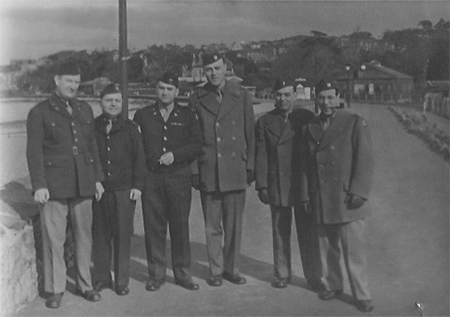
March 1945. Photograph illustrating a group of Officers pertaining to the 74th General Hospital, while stationed in the United Kingdom.
From L to R: John A. Fallen, David R. Corey, Samuel Klein, Nathan Platt, George Raez, and Herbert F. Waldhorn.
Dental Section:
The Dental service consisted of 5 Officers and 11 Enlisted Men as follows:
| 1 x Major | Chief of Dental Service Oral Surgeon |
| 1 x Captain | Prosthetist |
| 2 x Captains | Operative |
| 1 x 1st Lieutenant | Operative |
| 2 x Technician Grade 3 | Laboratory Technicians |
| 4 x Technician Grade 4 | Laboratory Technicians |
| 1 x Technician Grade 5 | Laboratory Technicians |
| 1 x Technician Grade 4 | Chair Assistant |
| 4 x Technician Grade 5 | Chair Assistant |
| 1 x Technician Grade 5 | Records Section |
| 1 x Technician Grade 5 | Supply |
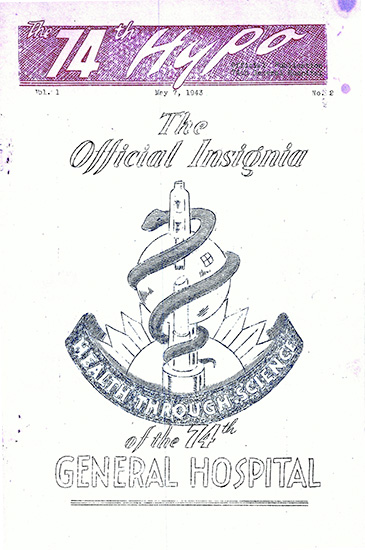
Cover of “The 74th Hypo”, official publication of the 74th General Hospital. Vol. 1, No. 2, May 7, 1943. Courtesy Gregory Sobieski.
The dental clinic was a 10 room building with pitch mastic floors. There was hot and cold running water throughout and also excellent latrine facilities. Heating was accomplished by use of coke stoves placed in most of the rooms.
The clinic also had one electric dental engine and for the other chairs, utilized foot engines. Operating lights were of the Pelton type and were present at most of the chairs. All of the operating chairs used were taken from MD Chest # 60 (i.e. Item # 9502500 –ed). It was noted that unusual fatigue resulted from working long hours with foot engines and field chairs.
Statistics for 1944:
| Monthly Table of Admissions and Dispositions (10 May to 31 December 1944) |
|
| Admissions | |
| Month | |
| (Transferred from 56th General Hospital – 10 May 1944) | 180 |
| May (11 to 31) | 271 |
| June | 268 |
| July | 177 |
| August | 99 |
| September | 277 |
| October | 246 |
| November | 273 |
| December | 90 |
| Total Admissions | 2695 |
| Dispositions | |||||||
| General Duty | Other Activities | ||||||
| Own Org. |
Repl. Depot |
(Injured Duty) |
N.T. Recon |
Gen Red Recon |
Sofl | Total | |
| May | 232 | 44 | (0) | 19 | 5 | 25 | 325 |
| June | 209 | 38 | (24) | 22 | 12 | 21 | 302 |
| July | 70 | 65 | (61) | 4 | 8 | 21 | 168 |
| August | 60 | 87 | (2) | 14 | 13 | 0 | 194 |
| September | 48 | 62 | (55) | 29 | 15 | 38 | 192 |
| October | 62 | 34 | (25) | 37 | 19 | 70 | 222 |
| November | 147 | 40 | (42) | 51 | 30 | 50 | 318 |
| December | 203 | 70 | (53) | 18 | 9 | 329 | 629 |
Changes in Organization:
At the beginning of 1944 there were only 4 Officers assigned to the Surgical Service. The remainder of the surgical staff joined the unit in January and February, thus bringing the total to 17. The surgical staff did not function as such, however, until 11 May 1944 when the Hospital took over the plant and patients of the 56th Gen Hosp.
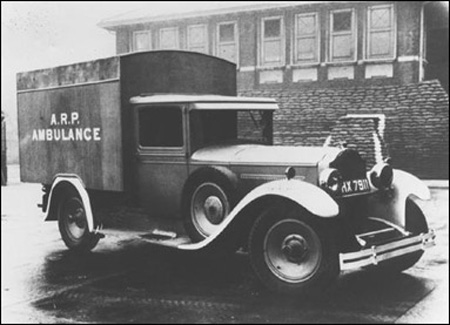
Example of an Air Raid Precaution Ambulance as loaned to the 74th General Hospital by the local ARP. This type of ambulance was used to transport patients to and from the Hospital while stationed in England.
1945:
During 1945, the Hospital served as a Concentration Center for patients who were evacuated to the Zone of Interior. A total of 13,426 patients were admitted to the Hospital during this period, and 12,126 were received by convoy. Of the number of patients admitted; 4,376 had diseases, 2,134 were injured and 6,943 were battle casualties. During this period, 14,578 dispositions were made and 694 cases returned to duty, 176 were sent to Rehabilitation Centers, 119 were transferred to other Hospitals, 13,584 were shipped to the ZI and there were a total of 3 deaths.
Training:
An important phase of the Hospital Program was the rehabilitation of convalescent patients, whether bed-ridden or ambulatory. A program of convalescent training proved very satisfactory and provided sight-seeing, conducted tours and entertainment. Entertainment was provided by British individuals and organizations. Patients physically able received passes. On orders of the Base Surgeon (UKX 35068, HQ UK Base, 26 April 1945), rehabilitation was completely eliminated except for bed-ridden patients. All others were sent to Convalescent Centers.
After having completed a course of training at Watson Barracks, West Swindon, the personnel operating the I and E Program (Information-Education Program –ed) assumed its responsibilities on 18 May 1945. It consisted of Captain Abraham I. Beacher, MC (O-296982) as Commanding Officer, 1st Lieutenant Frances Ireland (N-755181) as Assistant, and Technician Fourth Grade John W. Seay (34794920) as full time assistant.

Photograph illustrating one of the buildings housing the 74th General Hospital. The place is the “Lycée Henri Martin”, St. Quentin, France, where the Hospital remained from 30 June 1945 to 5 August 1945.
Personnel:
The Personnel Department was busy bringing all Service Records up to date and in tabulating the Adjusted Service Rating Scores. Thirteen (13) Enlisted Men were qualified for discharge, having a score of 85 points or more. 5 men were lost in accordance with the Army policy to discharge all men over 42 years of age.
The following losses in Officer personnel were sustained:
Transfers to the Zone of Interior for medical reasons:
Lt. Col. Walter H. Mendel, MC (O-428207)
Maj. Ralph Almour, MC (O-22482)
Maj. Harley W. Clinton, MC (O-434635)
Maj. Samuel Goldblatt, MC (O-464316)
Maj. Aaron Roth, MC (O-219387)
Maj. Luis Viteri, MC (O-519535)
Capt. Ernest E. Bradley, QMC (O-158548)
Capt. Resse O. Geleran, MC (O-294427)
Capt. Stephen F. Herne, MC (O-430239)
1st Lt. Elizabeth C. Hurt, ANC (N-760557)
1st Lt. Rosemary Lozier, ANC (N-760519)
1st Lt. Nancy K. Moyer, ANC (N-760685)
1st Lt. Nancy M. Parkins, ANC (N-761732)
1st Lt. Harold R. Street, SnC (O-517069) death
1st Lt. May L. M. Yeager, ANC (N-724805)
2d Lt. Ruth C. Brennan, ANC (N-761219)
2d Lt. Ruth E. Connor, ANC (N-751225)
2d Lt. Ann E. Brosnan, ANC (N-759726)
2d Lt. Lois M. Buzard, ANC (N-761760)
2d Lt. Dorothy D. Dunlap, ANC (N-759084)
2d Lt. Martha V. Jones, ANC (N-761425)
2d Lt. Marion C. MacDonald, HD (R-226)
2d Lt. Hilda O. Norton, ANC (N-761632)
2d Lt. Jean E. Thompson, ANC (N-761065)
2d Lt. Ann L. Trezona, ANC (N-761747)
2d Lt. Mildred F. Yoxall, ANC (N-741870)
Transfer to other organizations:
Lt. Col. Holcombe H. Hurt, MC (O-326697) 141st General Hospital
Lt. Col. Joseph F. Herman, MC (O-332331) 117th General Hospital
Lt. Colonel George D. Williams, MC (O-422948) 806th Medical Service Detachment
Maj. Robert K. Harvey, MC (O-1692180) 304th Station Hospital
Maj. John A. Fallen, MC (O-513813) 154th General Hospital
Capt. Philip L. Boyle, ChC (O-529144) 102d General Hospital
Capt. Orville N. Jones, MC (O-490076) 93d General Hospital
Capt. Charles Kalil, MC (O-40228) First United States Army
Capt. Richard W. Halfast, MC (O-449706) 1st Auxiliary Surgical Group, Seine Section
Capt. Sydney B. May, MC (O-465306) Third United States Army
Capt. Samuel S. Rosenblum, MC (O-503660) 197th General Hospital
Capt. Charles Rutledge, MC (O-1685229) First United States Army
Capt. Henry E. Shear, MC (O-482087) 198th General Hospital
Capt. Samuel Sherman, MC (O-498892) 738th Medical Service Detachment
Capt. Bachman S. Smith, Jr., MC (O-468029) 178th General Hospital
Capt. Herbert F. Waldhorn, MC (O-470177) HQ & HQ Office of Strategic Service
1st Lt. Meyer H. Berliant, MC (O-1690517) 79th General Hospital
1st Lt. Jack L. Haber, MC (O-493375) 121st Station Hospital
1st Lt. Catherine J. Wall, ANC (N-760517) 35th Station Hospital
1st Lt. Ruth Wilson, ANC (N-734390) 137th General Hospital
2d Lt. Mary F. Crowley, ANC (N-736094) 137th General Hospital
2d. Lt. Elizabeth M. Prosser, ANC (N-759400) 19th Replacement Depot)
2d Lt. Edward Stern, QMC (O-1590829) 190th Medical Service Detachment
2d Lt. Elizabeth M. Strobel, ANC (N-761761) 35th Station Hospital
2d Lt. Marguerite L. Turner, ANC (N-760758) from newly arrived General Hospital
2d Lt. Alpha R. Vinson, ANC (N-760673) from newly arrived General Hospital
2d Lt. Helen G. Wright, ANC (N-761412) from newly arrived General Hospital
WO Gilbert H. Taylor (W-2108018) HQ ETOUSA
New Assignments received:
Captain Samuel Klein, MC (O-528135) reassigned, previously lost to combat unit
1st Lt. Mary F. O’Malley, ANC (N-756052)
1st Lt. George Raez, MC (O-530530)
2d Lt. Ruth E. Connor, ANC (N-751225)
2d Lt. Mary C. Leddy, ANC (N-764382)
2d Lt. Phyllis L. MacDonald, ANC (N-728660)
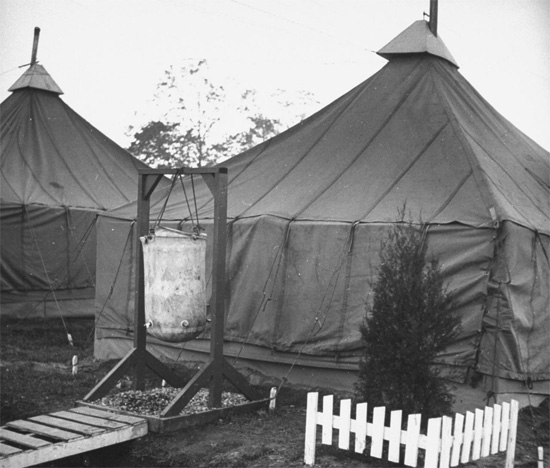
Illustration showing the winterization process on M1934 Pyramidal Tents. Notice how wooden walls have been constructed, over which the tent has then been pitched. Photograph taken at Fort Dix, Wrightstown, New Jersey (Training & Pre-Staging Center).
Gains of Officers during this period:
Maj. Frank Costa, MC (O-474402)
Maj. John F. Foley, MC (O-367682)
Maj. Aaron Reth, MC (O-219387)
Capt. Benjamin Cherkas, MC (O-496273)
Capt. Lee A. Doyle, ChC (O-525686)
Capt. Jacob Barnes, MC (O-500675)
Capt. John N. Rice, MC (O-489575)
1st Lt. Mary E. Conroy, ANC (N-721434)
1st Lt. Helen E. Hughes, ANC (N-722569)
1st Lt. James K. Reed, Inf (O-1305311)
2d Lt. Stella J. Arata, ANC (N-753714)
2d Lt. Doris M. Bergeron, ANC (N-753888)
2d Lt. Josephine E. DeMario, ANC (N-753503)
2d Lt. Cornelia A. Doherty, ANC (N-753691)
2d Lt. Mary J. Fontaine, ANC (N-753511)
2d Lt. Mary E. Giles, ANC (N-753511)
2d Lt. Marguerite L. Henderson, ANC (N-787255)
2d Lt. Pauline G. Hinton, ANC (N-763664)
2d Lt. Norma J. Hotaling, HD (R-342)
2d Lt. Marcia C. Hughett, ANC (N-773564)
2d Lt. Jeannette R. Leonard, ANC (N-753898)
2d Lt. Wanda E. Lukomske, ANC (N-753769)
2d Lt. Thelma A. Payne, ANC (N-767210)
2d Lt. Claire A. Scruton, ANC (N-753499)
2d Lt. Clare A. Wust, ANC (N-753557)
This new T/O went into effect on 3 March 1945 and the unit was completely re-organized per the changes outlined above.
Medical Service:
The Medical Service of the organization dealt with two groups of patients. The first group consisted of those patients boarded by other Hospitals and sent to the 74th Gen Hosp for evacuation to the ZI. The second group were those active medical cases sent to the unit by hospital ambulances from other hospitals for further treatment and disposition. This last group constituted a comparatively small number of the total admissions for the year.
The greatest number of patients sent to the unit for evacuation to the ZI were surgical cases. Orthopedic conditions made up the largest group of these admissions. The next largest section of the ZI patients was that composed of trench foot cases. No amputations were done at the Hospital for injuries resulting from trench foot or frostbite.
Two patients died in the Hospital while awaiting transportation for the ZI. One was a case of Hodkins Disease with extensive peribronchial dissemination, and the other a case of pulmonary tuberculosis with extensive cavitation and pneumonic consolidation.
A relatively large number of patients passing through the Hospital for the ZI were not in need of any hospitalization.
During the closing phase of the Hospital, the main function of the Medical Service was the disposition of patients. Detailed instructions given in directives from the Supply Office facilitated the actual process of closing down.
Neuropsychiatric Section:
On 15 January 1945, this department became separated from the Medical Service.
Since 1 January 1945, one ward only was utilized (45 beds including 15 tent beds). The Chief of Service, Maj. Elic A. Denbom, MC (O-306174), and his assistant Capt. Herbert F. Waldhorn, MC (O-470177) comprised the Officer personnel. The Charge Nurse, 1st Lt. Bernice Osborne, ANC (N-761376), who had many years of civilian psychiatric service, was assisted by four ward men and two night men. With one exception, all Enlisted personnel had previous training in NP work.
Since 3 December 1944, the 74th served as a concentration point for ZI patients from other hospitals. The group of battle casualties were predominantly acute anxiety states – combat exhaustion, but there were also many psychopaths. Of those admitted, approximately 25% were sent to the ZI. The remainder were either returned to limited duty or sent to specialized NP hospitals for further treatment and rehabilitation. With the decline of active patients, the specialized chemotherapeutic techniques were used. Patients requiring special methods were transferred to the 312th Station Hospital for therapy.
Dermatology and Venereal Disease:
From 1 January to 28 May 1945 this department had a total of 316 admissions. There were a total of 1,530 patients seen in consultation, 700 of whom were consultations on in-patients. Approximately 190 minor surgical procedures were done. Of these, 138 spinal punctures were performed while the remainder consisted of the removal of warts, skin biopsies, etc.
Dental Service:
Since the role of the Hospital had become one of a Concentration Center for patients returning to the ZI, there was a rapid turnover of personnel and little time available for dental treatment. However, all patients were examined and dental treatment rendered as time permitted.
Stations in the European Theater of Operations – 74th General Hospital
Tyntesfield, Somerset , England – 10 May 1944 > 21 May 1945 (replaced 56th Gen Hosp)
Saint-Quentin, Aisne, France – 2 Jul 1945 > 5 Aug 1945 (replaced 228th Gen Hosp)
Commercy, Lorraine, France – 27 Aug 1945 > 19 Nov 1945 (replaced 50th Gen Hosp)

Portrait of First Lieutenant Jane Fradel, ANC, N-761420, Nurse with the 74th General Hospital.
Closing the Hospital:
The unit operated United States Army Hospital Plant # 4165 until 21 May 1945, at which time the Hospital was closed for further admissions as of 2400 hours. Concurrently with the evacuation of patients, the closing of the physical plant proceeded step by step. Various items of supply and equipment were segregated, labeled, prepared for shipment and transferred to the appropriate depot in accordance with current directives.
In compliance with “SOP for Closing Hospital Site and Unit Movement from UK” (UK Base, Office of the Surgeon, dated 22 May 1945), Hospital records were boxed and shipped to AG Inactive Records Branch, Belgium Supply Depot, Beveren Waas, Belgium, for storage.
On 26 June 1945, the unit departed from Tyntesfield Park. The personnel were transported by motor convoy to Temple Meads Station, Bristol at 0500 hours. About three hours later the entire command arrived at Southampton. There, the staff boarded the converted Liberty Ship “Marine Wolf” and weighed anchor at 1330 hours. Arriving at Le Havre the same evening, the personnel remained aboard until the following afternoon, debarking at 1500 hours, 27 June 1945. A delicious hot meal awaited everyone at the mess hall, near the railway station. By 1700 hours the forty and eights (40 hommes et 8 chevaux, French railroad boxcars –ed) were fully loaded and departed for Camp “Pall Mall” near Etretat, arriving at 2100 hours.
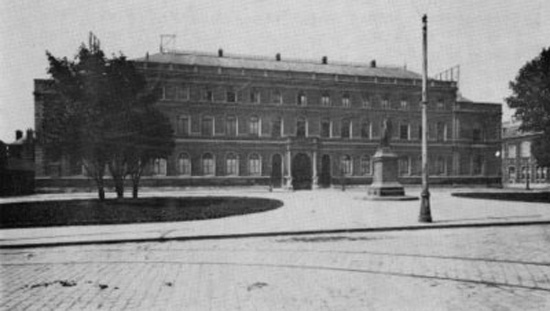
Illustration showing “Lycée Henri-Martin” in Saint-Quentin, Aisne, France. This building was occupied by the 228th General Hospital, and later became home to the 74th General Hospital until after V-E Day.
The personnel remained at Camp “Pall Mall” for two days, and on 29 June were once again loaded into boxcars and departed for St. Quentin, Aisne, France, arriving at 0500 hours the following morning. Coffee and sandwiches were served at the transient mess and an hour later the unit arrived at the 228th General Hospital which was situated in the Lycée Henri-Martin and Institut Saint-Jean (secondary school and college located in Saint-Quentin –ed). The unit remained at this site until 5 August 1945.
One last change of station was to take place around end August, when the organization opened again in the Caserne Oudinot, located in Commercy, France, on 27 August 1944. The hospital relieved the 50th General Hospital and eventually closed for operation on 19 November 1945.
Statistics:
The following statistical report of the functions of the 74th General Hospital for the period 1 January 1945 to 28 May 1945 (inclusive) was prepared by Col. Teperson (Commanding Officer):
| Patients remaining as of 2400 hours, 31 December 1944: | |
| Medical Service | 345 |
| Surgical Service | 771 |
| Total Remaining | 1116 |
| Admissions: | |
| From Command | 200 |
| Boarded for ZI | 12126 |
| Hospital Trains | 637 |
| Others | 499 |
| Total Admissions | 13462 |
| – Disease | 4376 |
| – Injury | 2143 |
| – Battle Casualty | 6943 |
| Total Patients | 14578 |
| Average Daily Admissions | 95 |
| Dispositions: | |
| To Duty | 694 |
| To Rehabilitation | 176 |
| Transferred to other Hospitals | 119 |
| To Zone of Interior | 13584 |
| Died | 3 |
| AWOL | 2 |
| Total Dispositions | 14578 |
| Average Daily Dispositions | 99 |
| Remaining as of 2400 hours, 28 May 1945 | 0 |
| Total patient days of treatment | 160451 |
| Average Daily Census | 1084 |
| Highest Census (30 January 1945) | 1377 |
| Lowest Census (28 May 1945) | 399 |
| Outpatient Visits | 1784 |
| Outpatient Treatments | 2859 |

France 1945. While stationed in France, personnel of the 74th General Hospital during a tour in Paris visit the “Tomb of the Unknown (WWI) Soldier”, situated under the Arc de Triomphe in the French capital city.
Personnel Roster:
| Officers | |
| Alesio, Joseph J. | Allen, Robert F. |
| Almour, Ralph (Maj, MC, O-22482) | Anderson, Josephine R. |
| Arata, Stella J. (2d Lt, ANC, N-753714) | Austin, Elizabeth G. |
| Bagley, Olive E. | Barnes, Jacob (Capt, MC, O-500675) |
| Beacher, Abraham I. (Capt, MC, O-296982) | Bergeron, Doris M. (2d Lt, ANC, N-753888) |
| Berkeley, Alfred R., Jr. | Berkove, Alfred B. |
| Berliant, Meyer H. (1st Lt, MC, O-1690517) | Blanchard, Jane E. |
| Block, William H. | Boehret, Alice O. |
| Bohensky, Anna M. | Bole, William W. |
| Boyle, Phillip L. (Capt, ChC, O-529144) | Bradley, Ernest E. (Capt, QMC, O-158548) |
| Brennan, Ruth C. (2d Lt, ANC, N-761219) | Brewer, Evelyn |
| Brosnan, Ann E. (2d Lt, ANC, N-759726) | Browning, Anne E. |
| Buzard, Lois M. (2d Lt, ANC, N-761760) | Camaratto, Nancy A. |
| Castex, Hannah J. | Cherkas, Benjamin (Capt, MC, O-496273) |
| Chesrow, Eugene J. | Childross, Nelle M. |
| Clarke, Elizabeth S. | Clarke, Jean O. |
| Clementine, Carolina | Clinton, Harley W. (Maj, MC, O-434635) |
| Coleman, Reese C., Jr. | Connor, Ruth E. (2d Lt, ANC, N-751225) |
| Conroy, Mary E. (1st Lt, ANC, N-721434) | Corey, David R. |
| Costa, Frank (Maj, MC, O-474402) | Crescenta, Wimmiam G. |
| Crowley, Mary F. (2d Lt, ANC, N-736094) | Curtiss, Julia |
| Cutler, Joseph W. | Day, Teressa W. |
| DeMario, Josephine E. (2d Lt, ANC, N-753503) | Denbo, Elic A. |
| Doherty, Cornelia A. (2d Lt, ANC, N-753691) | Donovan, Catharine H. |
| Dotterer, Thomas D. (Maj, MC) | Doyle, Leo A. (Capt, ChC, O-525686) |
| Drumm, Ada M. | Dunlap, Dorothy D. (2d Lt, ANC, N-759084) |
| Eaklo, Mary H. | Easley, Bernice |
| Elliott, Michael (Capt, ChC) | Embree, Elisha D. |
| Englert, Marjorie A. | Englund, Ruth E. |
| Enstrom, June | Estes, Leonard E. |
| Ewart, Ryland K. | Fairfax, Kenneth T. |
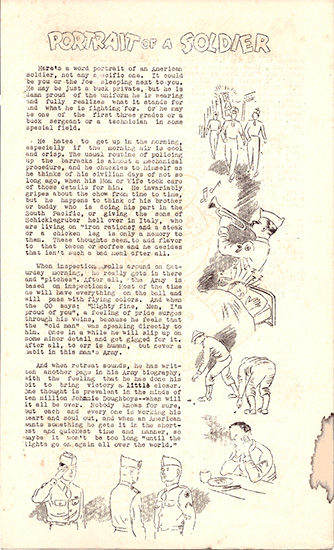
Portrait of a Soldier, as published in “The 74th Hypo”. Courtesy Gregory Sobieski.
| Fallen, John A. (Maj, MC, O-513813) | Feeley, Helen G. |
| Feltner, John B. | Ferguson, John P., Jr. |
| Fetzer, Winneta C. | Fike, Esther E. |
| Fitzgerald, Mary R. | Foley, John J. (Maj, MC, O-367682) |
| Fontaine, Mary J. (2d Lt, ANC, N-753511) | Fowler, Evan C. |
| Fradel, Jane (1st Lt, ANC, N-761420) | Frankenfield, Ina E. |
| Fuller, Lawrence S. | Gamsu, George |
| Geleran, Resse O. (Capt, MC, O-294427) | Getchell, Mary L. |
| Giles, Mary E. (2d Lt, ANC, N-753511) | Goldblatt, Samuel (Maj, MC, O-464316) |
| Goldman, Morris L. | Goodrich, Milton H. |
| Gordon, George R. | Greenhouse, William W. |
| Gutsch, Minna L. | Haber, Jack L. (1st Lt, MC, O-493375) |
| Halfast, Richard W. (Capt, MC, O-449706) | Hallen, Alfred N. |
|
Hardy, Andy C. (1st Lt, MC)
|
Harris, Helen A. |
| Harvey, Robert K. (Maj, MC, O-1692180) | Heffner, Elizabeth M. |
| Heimbecker, Jane E. | Henderson, Marguerite L. (2d Lt, ANC, N-787255) |
| Henshaw, Norma E. | Herman, Joseph F. (Lt Col, MC, O-332331) |
| Herne, Stephen F. (Capt, MC, O-430239) | Hershey, Mary V. |
| Hesselgosser, Delbert D. | High, Lucy V. |
| Hinton, Pauline G. (2d Lt, ANC, N-763664) | Hoffman, Sadie |
| Honaker, Tuila R. | Hopp, Eugene S. |
| Horne, Stephen F. | Hornickel, Margaret J. |
| Hotaling, Norma J. (2d Lt, HD, R-432) | Hughes, Helen E. (1st Lt, ANC, N-722569) |
| Hughes, Florence H. | Hughett, Marcia C. (2d Lt, ANC, N-773564) |
| Hunt, Idell V. | Hurt, Elizabeth C. (1st Lt, ANC, N-760557) |
| Hurt, Holcombe H. (Lt Col, MC, O-326697) | Ireland, Frances (1st Lt, ANC, N-755181) |
| Jacobs, Joseph J. | Janov, Esther |
| Jarvey, William S. J. | Johnson, Fuchsia L. |
| Johnson, Ina T. | Jones, Martha V. (2d Lt, ANC, N-761425) |
| Jones, Orville N. (Capt, MC, O-490076) | Kalil, Charles (Capt, MC, O-40228) |
| Kanter, James L. | Kaplan, Alex M. |
| Kennedy, Elizabeth P. | Kleber, Mathilda V. |
| Kleckner, Betty J. | Klein, Samuel (Capt, MC, O-528135) |
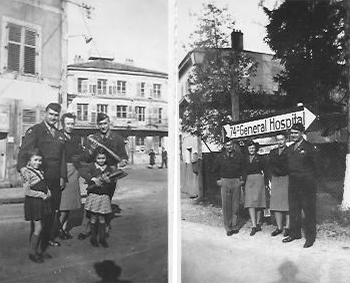
Left: October 1945, Commercy, France. From L to R: Captain Samuel Klein, unknown ANC Officer and Lieutenant Andy C. Hardy with local children.
Right: October 1945, Commercy, France. Medical Corps and Army Nurse Corps Officers of the 74th General Hospital pose for the photographer.
| Lavene, Maurice | Leddy, Mary C. (2d Lt, ANC, N-764382) |
| Leegant, Harold A. | Leonard, Jeannette R. (2d Lt, ANC, N-753898) |
| Lewis, Elizabeth e; | Linz, Anne L. |
| Loring, Mark L. | Loveman, Adolph B. |
| Loucks, Joseph A. | Lozier, Rosemary (1st Lt, ANC, N-760519) |
| Luffy, Mary L. | Lukomske, Wanda E. (2d Lt,ANC, N-753769) |
| Lunger, Jeanne C. | MacDonald, Marion C. (2d Lt, HD, R-226) |
| MacDonald, Phyllis L. (2d Lt, ANC, N-728660) | Mackowiak, Edwin J. |
| Madden, Frank J. | Mahoney, Anna R. |
| Maroney, John A. | May, Sidney B. (Capt, MC, O-465306) |
| McClain, Mary C. | McNiven, Catherine G. |
| Mendel, Walter H. (Lt Col, MC, O-428207) | Miller, Nathan E. |
| Moyer, Nancy K. (1st Lt, ANC, N-760685) | Mull, Margaret R. |
| Mullens, Dicey A. | Murphy, Genevieve |
| Murphy, Margaret K. | Murray, Ellen F. |
| Nash, Edwin A. | Nelson, Margaret L. |
| Nornhold, Geraldine L. W. | Norris, Kathryn |
| Norton, Hilda O. (2d Lt, ANC, N-761632) | Obenshain, Clara P. |
| O’Malley, Mary F. (1st Lt, ANC, N-756052) | Osborn, Bernice |
| Pace, John | Pakarow, William |
| Parkins, Isabel R. | Parkins, Nancy M. (1st Lt, ANC, N-761732) |
| Parkinson, Rose | Parnes, Jacob |
| Pawloski, Bernard | Payne, Thelma A. (2d Lt, ANC, N-767210) |
| Phelps, Evelyn G | Phillips, Vivian M. |
| Pierce, Dorothy L. | Platt, Nathan |
| Pope, Juanita K. | Price, Herman F. |
| Prosser, Elizabeth M. (2d Lt, ANC, N-759400) | Raez, George (1st Lt, MC, O-530530) |
| Read, Lois W. | Reddeck, Dorothy V. |
| Reed, James K. (1st Lt, Inf, O-1305311) | Reeder, Classie H. |
| Reho, Agnes E. | Reth, Aaron (Maj, MC, O-219387) |
| Rice, John N. (Capt, MC, O-489575) | Rosenblum, Samuel S. (Capt, MC, O-503660) |
| Ross, Louise | Roth, Aaron (Maj, MC, O-219387) |
| Rudacille, Edna S. | Rutledge, Charles C. (Capt, MC, O-1685229) |
| Schibler, Rudolph | Schnader, Helen J. |
| Schultz, Jacob F. | Scruton, Claire A. (2d Lt, ANC, N-753499) |
| Sharp, Ralph W. | Shear, Henry E. (Capt, MC, O-482087) |
| Sherman, Samuel (Capt, MC, O-498892) | Sidner, Dorothy M. |
| Simmons, William E. | Sjolander, Norma |
| Sleas, Lorraine H. | Smith, Bachman S., Jr. (Capt, MC, O-468029) |
| Smith, Betty M. | Spear, Jacsie C. |
| Spohn, Albert K. | Stanisky, Alberta H. |
| Staub, Phillip L. | Stein, Lillian J. |
| Stephens, Lois W. | Stern, Dorothy V. |
| Stern, Edward (2d Lt, QMC, O-1590829) | Stone, John S. |
| Street, Harold R. (1st Lt, SnC, O-517069) | Strobel, Elizabeth M. (2d Lt, ANC, N-761761) |
| Stuart, Clarissa | Taylor, Gilbert H. (WO, W-2108018) |
| Taylor, Lenore D. | Teperson, Hyman I. (Col, MC) |
| Thomas, Anne C. | Thompson, Jean E. (2d Lt, ANC, N-761065) |
| Tobin, Theresa F. | Trezona, Ann L. (2d Lt, ANC, N-761747) |
| Trostle, Ann L. | Tupper, Walter E. |
| Turner, Marguerite L. (2d Lt, ANC, N-760758) | Udesky, Herbert (Maj, MC) |
| Van Loon, Edward J. | Vaughn, Mary E. |
| Vinson, Alpha R. (2d Lt, ANC, N-760673) | Viteri, Luis E. (Maj, MC, O-519535) |
| Wagner, Mathias A. | Waldhorn, Herbert F. (Capt, MC, O-470177) |
| Wall, Catherine J. (1st Lt, ANC, N-760517) | Walla, Walter S. |
| Washinger, Helen M. | Watkins, Ivy D. |
| Wertlow, Marguerite L. | Williams, George D. (Lt Col, MC, O-422948) |
| Williams, Sarah R. | Williams, Virginia C. |
| Wilson, Ruth (1st Lt, ANC, N-734390) | Wingaris, Eleanor M. |
| Wittenmyer, Elizabeth S. | Wright, Helen G. (2d Lt, ANC, N-761412) |
| Wust, Claire A. (2d Lt, ANC, N-753557) | Wynn, Kathleen C. |
| Yeager, Mary L. M. (1st Lt, ANC, N-724805) | Yoxall, Mildred F. (2d Lt, ANC, N-741870) |
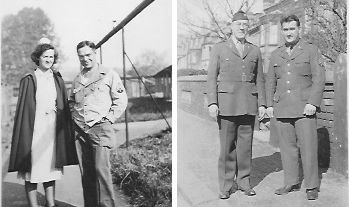
Left: July 1944, United Kingdom. Nurse Genevieve Murphy and Technician 5th Grade William J. Schmiedl pause for the photographer.
Right: March 1945, United Kingdom. Major Thomas D. Dotterer and Technician 4th Grade Belmont T. Nicholas of the 74th General Hospital.
| Enlisted Men | |
| Adams, Dick S. | Adriance, Kenneth C. |
| Ahrem, Henry C. | Aiken, Hiram I. |
| Aires, Assie S. | Akerman, James W. |
| Alder, John | Alford, George E. |
| Allegra, Frank | Allen, Clifford B. |
| Allison, Bueli A. | Allmyer, Milo C. |
| Almeida, Possidonio B. | Altarman, Morris |
| Altvater, Henry O. | Ambott, Richard V. |
| Anderson, John I. | Anzalena, Larry C. |
| Aponte, Joseph | Ard, Marion B. |
| Arnold, Spencer W. | Aronow, Sidney |
| Asbury, Lewis L. | Atino, Edward |
| Atkinson, Acie W. | Augustson, Walter C. |
| Ausant, Earl L. | Avant, Ralph E. |
| Ayotto, Ernest E. | Baar, Emil C. |
| Back, Charles W. | Badurski, Chester S. |
| Bailey, George E. | Baker, John |
| Baker, Raymond E. | Baker, Robert W. |
| Ball, Rial | Banister, Troy |
| Barber, Freward H. | Barker, Leslie G. |
| Barnes, Wallace L. | Barrett, Joseph E. |
| Barry, John F. | Bart, Joseph J. |
| Bauer, Robert P. | Bedley, Russell C. |
| Beigleizen, Joseph S. | Bell, John O. |
| Bencheck, Frank | Bendscheattle, Leo A. |
| Bennett, Curtis | Bennett, Robert G. |
| Benson, Bert | Berg, Herman A. |
| Bernemann, Edward W. | Berrier, William H. |
| Berschanski, Richard | Bertsch, Otto |
| Beveridge, Thomas M. | Beyer, Raymond J. |
| Binder, Edward | Biron, Marcel F. |
| Bishop, Herbert L. | Bisplinghoff, Marvin J. |
| Bjork, Oscar L. | Blair, Orin A. |
| Blanchette, Wilfred J. | Blecker, Isidore |
| Blumberg, Donald F. | Blythe, Lannie B. |
| Boettche, Bruce E. | Borinsky, Edward |
| Borow, Harry | Bovio, John |
| Bowens, Marin J. | Bowman, Richard |
| Boyer, Gilbert P. | Bracy, Charles R. |
| Bradshaw, Dick W. | Brammer, Robert E. |
| Brandenburg, Albert F. | Brandon, Quince W. |
| Branham, Cranshaw | Breeden, Colly C. |
| Bronneck, Felix | Bronstein, Louis |
| Brook, John A. | Brooks, Joseph F. J. |
| Brookshire, Julian D. | Brown, Dale W. |
| Brown, Eugene E. | Brown, Floyd F. |
| Brown, Herbert C. | Brown, Willard G. |
| Brust, Robert A. | Bryant, Howard C. |
| Buccigrossi, August V. | Buchanan, Leonard J. |
| Buchman, Harry | Bujol, Eugene P. |
| Bullock, Ordis A. | Burch, Frank H. |
| Burkardt, John P. | Burton, Robert D. |
| Butts, Earnest L. | Byrd, James L. |
| Cacioppo, Leon J. | Caffarello, James C. |
| Callahan, William J. | Campana, Joseph L. |
| Campbell, Earnest C. | Campbell, Francis C. |
| Caouette, Arthur J. | Cappadonna, Anthony S. |
| Caraveo, José, Jr. | Carey, Edward C. |
| Carlson, Harold E. | Carluccetti, Albert J. |
| Carroll, Jack F. | Carter, James T. |
| Casati, Edward W. | Cash, Wesbi A. |
| Cassett, Eugene G. | Catalano, Michael P. |
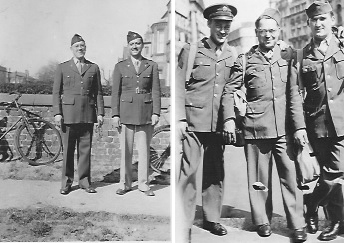
Left: Photograph of Major Thomas D. Dotterer and Major Luis E. Viteri, of the 74th General Hospital.
Right: Photograph illustrating some Noncommissioned Officers pertaining to the 74th General Hospital.
| Cateras, James | Cervantes, José F. |
| Chaisson, Melvin J. | Champion, Treora |
| Chapman, John P. | Chaput, Roland M. |
| Cheeks, Regenal C. | Chester, Andrew J. |
| Chestnut, Merlin J. | Chicalacos, Contantine G. |
| Chiossi, Joseph L. | Choate, David A |
| Chrisner, Marlon W. | Christensen, William G. |
| Christopher, Joe | Chrzanowski, James J. |
| Clark, Ova | Clites, Daniel E. |
| Coats, Fred D. | Cobb, Frank E. |
| Cobb, Robert J. | Coe, James |
| Coen, Joel D. | Coffey, Carl E. |
| Cohen, Hyman | Cohen, Leo |
| Cole, Daniel E. | Cole, Thomas |
| Colicchio, Joseph | Collins, Patrick F. |
| Colvin, Harry R. | Commander, James A. |
| Compton, William | Confer, Robert L. |
| Conner, Robert E. | Conner, William A. |
| Connolly, John J. | Connolly, Joseph W. |
| Conrad, Hamby | Conway, Vernon L. |
| Cook, Caddie | Cooper, Alfred H. |
| Cooper, Arthur | Corona, Sebastian D. |
| Cortez, Manuel | Costanza, Sam |
| Cothern, Jack L. | Coughlan, Joseph B. |
| Covert, Anthony B. | Cowan, Ira |
| Cowgur, Kenneth E. | Cox, Clarence |
| Cox, Luther E. | Cox, Lyle E. |
| Crane, Gerald R. | Crawley, Charles A. |
| Cress, Guy E. | Crisp, Howard W. |
| Cronin, Edward W. | Cronin, Frederick P. |
| Cross, Willard B. | Crossin, John |
| Crotean, Joseph O. | Crotts, Huland T. |
| Crotzer, Lee A. | Crowley, William C. |
| Crownin, Thomas W. | Crownover, Obed |
| Cundy, Phillip R. | Cunningham, Charles H. |
| Curran, David T. | Curtiss, Asa |
| Cychosz, Paul W. | Daffara, Mario |
| D’Amico, Bernard | Daniel, Robert H. |
| Daniels, Alexander | Darr, Glenn T. |
| Darrell, Henry D. | Daughtry, William R. |
| Davidson, Lindsay | Davis, Bennie H. |
| Davis, Bonnie W. | Davis, Hickson H. |
| Day, Augustine S. | Dean, Wilbur L. |
| Defreece, Aubra X. | DeGarmo, William |
| De Hart, Alby | De Hoff, Earl |
| Delaney, Alfred E. | DeLucca, Rocco C. |
| DeMayo, Ralph | Denton, Fred P. |
| DePaolo, Kennth J. | Deschler, Kenneth C. |
| Desilets, Charles O. | Detzel, George J. |
| Dickey, Arthur E. | DeDominico, Victor |
| Diewald, George | DeGiminiani, Jogn R. |
| DiGirolamo, Joseph | Dilisio, Harry J. |
| Dillon, Lee A. | Dillow, Ralph W. |
| DiMeo, Ernest J. | Dimmerling, Robert W. |
| Dimmopoullos, George T. | Dinham, John N. |
| DiNapoli, John D. | DiNapoli, Michael |
| Dittman, John | Dixon, Joseph G. |
| Dixon, Limuel F. | Dobbins, Omer H. |
| Dodson, James S. | Doher, Louis W. |
| Doherty, John J. | Dombrowski, Frank |
| Donaldson, Harold B. | Donlon, John T. |
| Dooley, Andrew K. | Dorger, Edward W. |
| Dornbrook, Lenard J. | Doster, Eli F. |
| Doucette, Leonard P. | Doughty, Vance A. |
| Dramis, Vincenzo | Dressel, Edwin S. |
| Dressler, William J. | Drobenak, Cyril M. |
| Du Bois, Richard W. | Duboy, Mike |
| Dudley, Walter D. | Dudzik, John J. |
| Dugan, James | Duke, Lawton M. |
| Dukek, Darrel A. | Dulak, Joseph P. |
| Duncan, Edgar R. | Duncan, Lloyd B. |
| Dunleavy, Thomas J. | Dunn, Claude S. |
| Dunphy, Richard T. | Durham, Herbert H. |
| Durham, Hubert P. | Dusek, Robert F. |
| Dybvig, Arlo M. | Dyer, Okey M. |
| Earls, Floyd W. | Earman, Harold |
| Easley, Bertie A. | Easton, Carnet S. |
| Ebner, Clarence J. | Eckert, Irving L. |
| Edging, John J. | Edie, Edward L. |
| Edwards, Charlie G. | Edwards, James S. |
| Edwards, John M. | Edwards, Raymond A. |
| Egner, Kenneth R. | Eller, Marshall W. |
| Ellerman, John W. | Elsey, Robert E. |
| Elvin, Robert W. | Emory, Andrew E. |
| Enderle, Robert J. | England, Norman A. |
| English, Clayton E. | Epling, Wilford K. |
| Epperson, Donald A. | Erikson, Robert W. |
| Esquivel, Petronilo R. | Evans, Henry |
| Evans, William | Ewart, Hugh W. |
| Faha, Joseph F. | Falk, Theodore P. |
| Farley, Theron E. | Farmer, Clarence A. |
| Farmer, John E. | Farquhar, Randall E. |
| Farrell, Sylvester | Feldman, Merrill I. |
| Felkel, Harvey W. | Fennen, Joseph F. |
| Ferrari, Sabatino | Ferry, Paul F. |
| Fesh, Joseph | Fetty, Wilmer F. |
| Fiedler, Robert B. | Fields, Willis |
| Fink, Donald L. | Fisher, Robert B. |
| Fitzgerald, William F. | Fletcher, John J. |
| Flora, Hollis B. | Fluty, Ernest R. |
| Foley, Francis J. | Fonfa, Arnold L. |
| Fontana, Frank J. | Fontenot, Edley |
| Ford, Elvin H. | Ford, Ralph |
| Forsyth, Daniel S. | Forte, Sam |
| Fosdal, Klermen | Foss, Harold G. |
| Foster, Fred E. | Fountain, James D. |
| Fowler, Charles E. | Fowler, Edgar S. |
| Frame, Francis J. | Frankel, Benjamin |
| Frankel, Seymour J. | Fratterelli, Carmen J. |
| Freed, Jack K. | Freeman, Roy |
| Freemire, George C. | Frees, Dale L. |
| Frenkel, Marcel | Fiedman, Sheldon A. |
| Fromm, Harold | Fromwitz, Jack M. |
| Frye, Lucian S. | Fuentes, Ernest |
| Fulmer, Wade O. | Fuss, Curtis W. |
| Gaba, Joseph E. | Galass, Florent M. |
| Galvin, Eugene G. | Garber, Fred |
| Garcia, Edward D. | Gard, John C. |
| Gardner, Floyd W. | Garrison, Joseph R. |
| Gasparro, Alfred W. | Gassman, Solomon |
| Geddes, Arthur W. | Genoese, Anthony E. |
| Gentsch, Andrew P. | George, Orville C. |
| Gerth, Henry J. | Gibbs, Jessie W. |
| Gibson, Andrew | Gilbert, Zalmon |

Photograph illustrating ANC Officers Elizabeth S. Clarke, Ina E. Frankenfield, and Anne L. Linz of the 74th General Hospital.
| Gillis, Robert E. | Ginsburg, Maurice |
| Girardi, Alighiero | Giza, Henry L. |
| Glassmeyer, Wilbur A. | Glydewell, Thomas R. |
| Golden, Charles H. | Golub, Robert N. |
| Gonzalez, Daniel L. | Good, Joseph |
| Goodman, James E. | Goodwin, William C. |
| Gordon, Theodore | Gorelnik, Nathan |
| Gower, Ben W. | Gray, Ashby E. |
| Gray, Lewis R. | Gredy, Lorenzo A. |
| Green, Richard P. | Greene, Bernard B. |
| Greene, Paul P. | Greski, Leonard B. |
| Griffin, Aaron H. | Griffith, Lewis F. |
| Grimmer, Anton W. | Grogg, Dorsel W. |
| Gross, Raymond B. | Gumbosky, William |
| Hacker, Thomas E. | Haire, Dale R. |
| Hall, Charles E. | Hall, Norman A. |
| Hallman, Ulmer L. | Halpin, William R. |
| Hammond, Oliver J. | Hanan, Isaac |
| Hancock, Malcolm T. | Hannon, James A. |
| Hanover, George W. | Hansel, Sam |
| Hansen, George O. | Hanson, Herbert H. |
| Hanson, Lloyd J. | Hardeman, Raymond L. |
| Harder, Dan B. | Harfst, Donald W. |
| Harrell, Clyde W. | Harrill, Haskell E. |
| Hart, John T. | Hartley, Walter V. |
| Harvell, Roscoe | Hatfield, John S. |
| Hatfield, Lloyd H. | Hathaway, Oscar G. |
| Hatmaker, Alva W. | Haviland, Omar D. |
| Hawkins, Harold C. | Hawley, Fred A. |
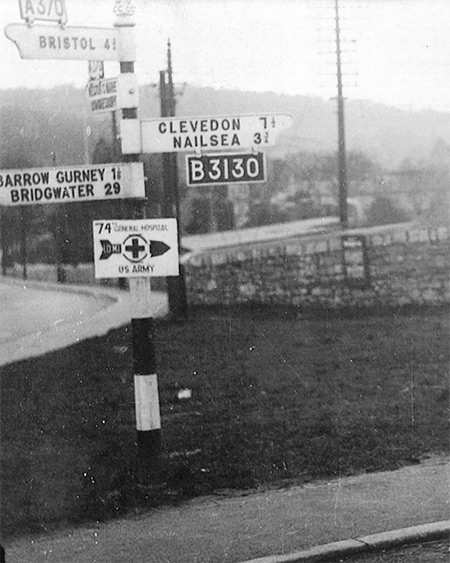
1945 United Kingdom. an important crossroad.
| Hawn, Harold W. | Haworth, Clurie W. |
| Hayden, Michael J. | Hayhurst, Roe N. |
| Hazelwood, William R. | Healey, Daniel P. |
| Healy, Amvrose W. | Heckroth, Herbert C. |
| Hefty, Robert P. | Heiman, Florent J. |
| Heineman, Arthur C. | Heldreth, William R. |
| Helmrich, Joseph | Hendrickson, Haakon O. |
| Henley, John P. | Hensley, Elmer C. |
| Herbst, Wilbur H. | Herkowskim, Leonard E. |
| Herries, Glenn A. | Herrman, John F. |
| Hester, William C. | Hester, William H. |
| Hether, Robert E. | Hicks, Hillard E. |
| Hill, Edwin C. | Hillman, Evans |
| Hinkle, Winnie W. | Hirshfield, Milton |
| Hitchings, Selwyn C. | Hladek, Frank J. |
| Hoff, Marvin | Hoffman, Donald W. |
| Hogue, Kenneth M. | Hollis, Charles E. |
| Holtman, Willis P. | Honaker, Lee B. |
| Hopper, Donald W. | Hoppough, Hilton H. |
| Horn, William C. | Howell, George A. |
| Howell, John A. | Huddleston, Hubert F. |
| Huff, William E. | Hughes, Harry J. |
| Hull, Robert D. | Hunn, Alan C. |
| Hunt, Louis | Hunter, Raymond A. |
| Hurley, William J. | Hurst, Archie D. |
| Hurst, Marion H. | Hussar, Ludwig K. |
| Ikard, John W. | Ingram, Hack H. |
| Irish, Charles | Jackson, David C. |
| Jacobs, Paul | James, Gordon D. |
| Jarrett, Everett C. | Jasko, Paul P. |
| Jaskulka, John L. | Jedrlinic, Peter A. |
| Jenkins, Derdette S. | Jenkins, Harry T. |
| Jenkins, John R. | Jenkins, Marshall F. |
| Jester, Robert B. | Jewett, Clarence E. |
| Johanson, Axel H. | Johnson, Clarence J. |
| Johnson, Gilbert | Johnson, Harvey G. |
| Johnson, Joe | Johnson, Ralph D. |
| Johnson, Richard P. | Johnson, Robert W. |
| Jones, Horace L. | Joseph, Michael |
| Julian, Kenneth H. | Jumper, James C. |
| Kajdi, Julius P. | Kaker, Frank R. |
| Kalivas, George | Kalliomaa, Walter H. |
| Kane, James S. | Kaplan, Irving S. |
| Kastanias, Peter | Kearley, James E. |
| Keefe, William S. | Kehm, John B. |
| Kelleher, Jeremiah W. | Kelly, Carl B. |
| Kemler, Murray | Kenny, Ray M. |
| Kephart, B ruce | Kerby, William B. |
| Kerchner, Carl M. | Keyser, James C. |
| Killian, Raymond | Killingsworth, Samuel |
| Kimberlin, Glenn E. | King, Homer R. |
| King, Roachel D. | King, Ross W. |
| Kingsmill, Alfred G. | Kirkendall, Lyle D. |
| Klause, John | Kleiman, Milton |
| Klevatt, Sol | Klosowski, Frank J. |
| Knight, Hershel H. | Knoderer, William H. |
| Knowles, Luther A. | Kochera, Andrew |
| Koenig, Ralph P. | Koon, Jimmie C. |
| Koon, Wiley J. | Koref, Stefan G. |
| Kormuszko, Edward A. | Koshinski, Raymond |
| Kosinski, Harry P. | Kosmoski, Alex J. |
| Kountz, Jesse C. | Kozak, Augustine F. |
| Kraneis, Richard | Krauth, Charles E. |
| Krelo, Frank | Krietner, Steven J. |
| Kroehler, Duwain A. | Kroll, Francis W. |
| Kropovitch, Joseph | Kubacki, Edmund |
| Kucharski, Walter | Kuntner, Walter F. |
| Kupski, John F. | Kuzlinski, Andrew E. |
| LaCicero, John R. | Lafferty, Harry M. |
| Lageschulte, Harold E. | LaLone, Floyd E. |
| Lambert, Frank | Lampert, Bernard B. |
| Land, Charles E. | Largent, Harvey W. |
| LaRusso, Salvatore D. | Latham, Jack M. |
| Lawler, Thomas O. | Lawson, Dewey H. |
| Leach, Ray R. | Leake, Claude F. |
| Le Blanc, Claris J. | Ledford, Colon A. |
| Leinig, Alfred E. | Lent, Gordon C. |
| Less, Walter H. | Leta, Lucian J. |
| Levasseur, Robert | Levine, Morris |
| Levoff, Irvin L. | Lewis, Albert A. |
| Lichtenwalter, Richard | Liebmann, Hans H. |
| Liebowitz, Alexander W. | Lind, Orville P. |
| Lindberg, William J. | Lindquist, Walter D. |
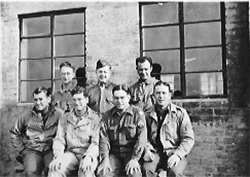
Group of personnel pertaining to the 74th General Hospital during their stay in the United Kingdom.
| Lindstrom, Alis | Liskawitz, Joseph J. |
| Lizzi, Dominic | Loftus, Floyd C. |
| Logan, Samuel G. | Logsdon, Elmar E. |
| LoMonaco, William V. | London, Benjamin |
| Long, George D. | Long, Leonard |
| Long, William S. | Lorber, Herman |
| Lord, Walter H. | Lorenzoni, Eulio |
| Lovett, Percy L. | Lowe, Paul E. |
| Lubianez, Zigmund P. | Lucas, Benjamin A. |
| Luccketti, Rocco H. | Lucenti, Anthony J. |
| Lundgren, Arthur M. | Lyman, Howard B. |
| Lynch, Bernard E. | Lynch, James N. |
| Lynch, Raymond T. | Lyons, Earl L. |
| Macomber, Elmer E. | Madsen, Lawrence A. |
| Magalis, Charles W. | Maier, Leonard J. |
| Malatt, Bruno | Manco, Evrard E. |
| Mangan, Nuncio J. | Marciello, Louis F. |
| Margolin, Ralph | Marino, Louis H. |
| Maritato, Louis J. | Markowitz, Morris S. |
| Marks, Yale D. | Marquardt, Gordon L. |
| Martindale, Franklin B. | Martinson, Herman A. |
| Mason, Woodrow W. | Massengale, John T. |
| Mastrangelo, Lawrence V. | Mastronardi, Dominick E. |
| Matarazzo, Pacifico J. | Mathisrud, Earl H. |
| Matthews, Petis B. | Matulis, Albert |
| Maturkanitch, Chester | May, Harold J. |
| Mayer, George | McAdams, John E. |
| McAdoo, Robert L. | McCall, Bunyon L. |
| McCall, Lawrence M. | McCumsey, Robert W. |
| McDaniel, William F. | McDonald, Laughlin F. |
| McDonnell, Edward M. | McFatridge, Clarence E. |
| McGann, Stephen J. | McGraw, Woodrow |
| McKeehan, James A. | McKenzie, Arthur J. |
| McLaughlin, John L. | McLoughlin, James J. |
| McMurry, Henry L. | McNally, John |
| McPherson, Wilbur E. | McPherson, William C. |
| Mechak, Raymond | Meier, Herbert G. |
| Melton, J. B. W. | Mercer, James A. |
| Merrill, Lorenzo S. | Meyer, Melvin P. |
| Michaelson, Isidore | Mihalko, Donald |
| Miller, Edward C. | Miller, Edwin |
| Miller, Morris M. | Miller, Ralston C. |
| Miller, William B. | Minore, Anthony W. |
| Miraldo, Peter J. | Mirkin, Joseph M. |
| Mishler, Charles | Mitchell, Curtis G. |
| Mitchell, James F. | Moison, Julius J. |
| Monlezun, Louis J. | Montgomery, William S. |
| Mooney, Malcolm T. | Moore, Albert P. |
| Moore, Richard F. | Moore, Richard N. |
| Morris, George H. | Morris, Leslie V. |
| Morrison, Turbin G. | Morrow, Michael H. |
| Morton, MacDonald G. | Muldoon, John |
| Mullens, James O. | Muro, Gerard |
| Murphy, John H. | Murphy, John J. |
| Murray, Farrell | Murray, James E. |
| Myers, James L. | Myers, Joseph |
| Nardi, Bruno | Navarrete, Milton |
| Neal, Fred A. | Nelson, Wils F. |
| Nesmith, Charles A. | Neumann, Robert W. |
| Newton, Arnold | Nicholas, Belmont T. |
| Nichols, Theodore | Nichols, Wharton A. |
| Nicolaou, Elias | Nilsen, Thomas W. |
| Noe, Pearl | Nolan, James L. |
| Norman, Farrel | Nowicki, Hilary H. |
| Nuth, John E. | Nygard, Bernard W. |
| O’Keefe, Francis J. | Okley, Johnie W. |
| Olden, George A. | Olsen, Vincent D. |
| Olson, Wallace K. | O’Mara, Edward T. |
| Oppenheimer, Rudolph | Pace, Jesse |
| Padgett, Horace D. | Painter, Robert L. |
| Pajor, Charles | Palaces, Charles J. |
| Palese, Gerardo | Panek, Ted T. |
| Parker, Harry R. | Parker, Lester W. |
| Parker, Thomas C. | Parks, Kenneth L. |
| Patch, Ashley F. | Patton, Thomas A. |
| Payne, Homer E. | Payne, James M. |
| Peace, Harold T. | Peeler, Paul E. |
| Pelletier, Charles A. | Pendygraft, James M. |
| Perciavalle, Rocco D. | Peremsky, Stanley J. |
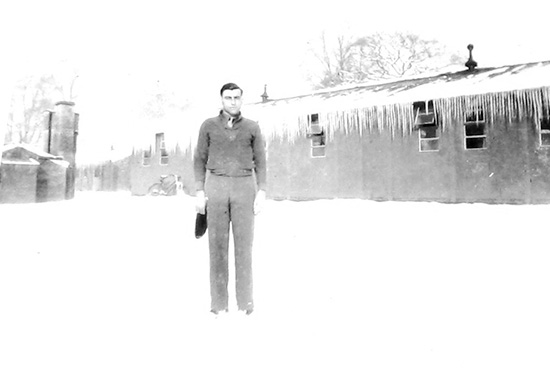
Private Herbert C. Brown in front of the Detachment’s barracks during winter in the United Kingdom.
| Perrett, James A. | Petersen, Charles A. |
| Petersen, William J. | Peterson, Carroll W. |
| Petrella, Angelo A. | Petrella, Patrick A. |
| Petrie, Leonard K. | Pezzenti, Albert |
| Phillips, Glenn B. | Piatty, Frank |
| Pierce, Ebert L. | Pierson, Robert J. |
| Pierson, William D. | Pilliod, Eugene J. |
| Pitchette, Elmer J | Plumley, James |
| Polhemus, Robert B. | Ponder, Guy E. |
| Poston, Porly B. | Powell, Clermont S. |
| Powell, Waymon E. | Powers, Charles M. |
| Pratt, Cecil C. | Pratt, Ernest E. |
| Pratt, Marion G. | Pressley, Fred W. |
| Price, Malcolm E. | Price, Robert H. |
| Prodey, Joseph | Puccio, Mario E. |
| Pulda, Arthur A. | Purser, J. C. |
| Putko, Albert | Queen, Reid |
| Rabinowitz, David | Rafferty, Bernard |
| Rafferty, Harry J. | Rampone, Alfred F. |
| Ramsey, Charles D. | Ransom, Roy L. |
| Ray, Hooper | Rayfield, Mack |
| Reault, Edward D. | Reaves, James D. |
| Redpath, Christopher | Reed, Robert E. |
| Rego, Guy | Rehberger, John M. |
| Reid, Frederick F. | Relong, Chester E. |
| Renaud, Thomas G. | Renner, William |
| Reppert, Russell R. | Reynolds, Arthur E. |
| Reynolds, George | Ricco, Anthony H. |
| Rice, Herbert D. | Rice, Sid M. |
| Rich, Lewis J. | Richmond, Gerald M. |
| Richmond, Harrel Q. | Richvalsky, Edward |
| Riedthaler, James A. | Rieley, Walter H. |
| Rigdon, George W. | Rioux, Norbert J. |
| Ritchey, Vernon D. | Roberge, Rudolph O. |
| Roberts, Eugene | Roberts, John |
| Robertson, J. W. | Robinson, Hollis W. |
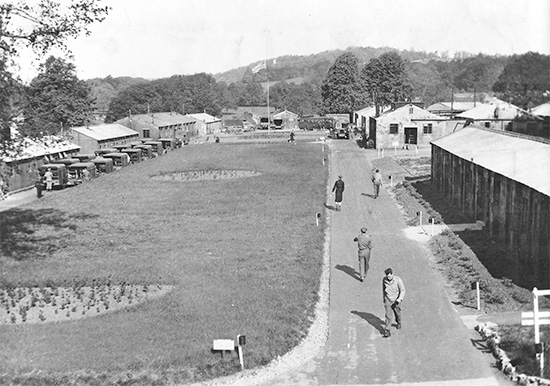
Summer 1944, 74th General Hospital installations at Tyntesfield, Somerset, England. View of main thoroughfare and partial view of the Motorpool at left (see parked vehicles). Courtesy Gregory Sobieski.
| Rogers, Walter H. | Rollins, John T. |
| Rominger, John R. | Rondinella, Vito |
| Roper, Le Roy | Rosch, John J. |
| Rosenberger, Joe E. | Ross, David R. |
| Ross, Frederick W. | Roth, Charles H. |
| Rule, Robert E. | Russell, Everett L. |
| Russo, Anthony D. | Russo, Michael P. |
| Sabo, John J. | Saganov, Henry |
| Sala, Jerry | Sammons, Alton W. |
| Sandas, Robert G. | Sands, David A. |
| Santone, John | Sardella, Frank |
| Sauers, Joseph F. | Savino, Anthony J. |
| Scandy, Anthony A. | Scarbrough, John W. |
| Scarry, George E. | Schebs, Irving L. |
| Schermer, Sidney | Schlack, Albert A. |
| Schmiedl, William J. | Schomisch, Ronald J. |
| Schonberg, Irving | Schreckinger, Milton E. |
| Schutzer, Stanley A. | Schwartz, Charles W. |
| Schwartz, Raymond R. | Schweitzer, James W. |
| Sciepko, Joseph K. | Scobie, Alvin C. |
| Seay, John W. | Selensky, Aloysius |
| Senkbeil, Lester C. | Shaw, William J. |
| Sheakley, Vernon Q. | Shearer, Dewey |
| Shenberger, Reuben | Sherman, Dale E. |
| Sherman, Robert L. | Shilling, George D. |
| Shulenburg, Frank C. | Sickler, Orion H. |
| Sigman, Leo | Sikes, Howard B. |
| Smathers, Carroll E. | Smith, Charles R. |
| Smith, Leo K. | Smith, Le Roy L. |
| Smith, Serpell | Smith, Warren D. |
| Smith, William E. | Snyder, Albert J. |
| Sommers, Frank J. | Spak, Louis E. |
| Spear, Sidney G. | Spence, Robert E. |
| Sprayberry, Pat | Sprengel, Harold J. |
| Stacey, Cecil L. | Stadler, Frederick C. |
| Stalvey, Hope E. | Stec, Felix |
| Steele, Harold C. | Steinbach, Carl F. |
| Steiper, John C. | Stephens, John |
| Stevens, Albert W. | Stier, Carl J. |
| Stiffler, Charles E. | Stine, Ralph W. |
| Stoflet, Gordon R. | Stolz, William D. |
| Stone, Earl D. | Strano, Frank A. |
| Stratigikis, Nick | Stratton, David L. |
| Stricland, Julie B. | Stroh, Allen E. |
| Stronach, Eben H. | Sullivan, Raymond B. |
| Sullivan, Victor M. | Summers, Marvin M. |
| Suraci, Bruno J. | Surber, John C. |
| Suto, Frank J. | Suttles, Prue R. |
| Swoboda, John J. | Sykes, Clair B. |
| Syre, William H. | Tanner, Frederick P. |
| Taylor, Gene O. | Taylor, Gilbert R. |
| Taylor, Hasford | Taylor, Lloyd C. |
| Taylor, Marvin | Taylor, Ralph D. |
| Tendort, William | Tennard, John B. |
| Terry, Andrew M. | Terry, Everett J. |
| Tesler, Albert | Thiessen, Robert C. |
| Thomas, Charles W. | Thurston, Ralph J. |
| Tikofsky, John | Tincher, Wilgus |
| Tobin, John J. | Todd, William F. |
| Tonzello, Umberto J. | Totoro, Anthony G. |
| Townsend, Robert M. | Triplett, Leon E. |
| Tropea, Anthony J. | Trudeau, Charles L. |
| Trugman, Bernard A. | Truitt, Alfred M. |
| Tudor, Earnest | Tupper, Herbert W. |
| Turley, Robert D. | Turner, Doyal L. |
| Tyo, Jesse A. | Urban, John S. |
| Vaculla, Joseph S. | Vanderhoft, William J. |
| Van Dyke, Marvin A. | Van Syckle, Ralph W. |
| Varner, Kelley W. | Veilleux, Eddie A. |
| Vella, Edward L. | Vereshack, Russell L. |
| Vergiel, Norman F. | Viebranz, Horace E. |
| Vinciguerra, John L. | Vins, Eugene V. |
| Vogt, George E. | Voss, Marvin |
| Vycital, Aldrich | Wager, George W. |
| Waldron, Peter C. | Walker, Orin E. |
| Wallace, John F. | Wallace, Roscoe H. |
| Wallis, Bittie L. | Walsh, Harry G. |
| Walters, Charles | Walther, Thomas J. |
| Ward, Alvin V. | Ward, Frank |
| Warders, Edward C. | Warren, Oliver R. |
| Warschauer, Seymour | Watkins, William L. |
| Watson, Donald D. | Watson, Thomas E. |
| Weakley, Jack H. | Webb, Robert E. |
| Weiss, Robert J. | Welber, Alphonse J. |
| Werner, Emil W. | Westerfield, Richard L. |
| White, Theodore R. | Wicker, Leon B. |
| Wilcox, Milo B. | Wilensky, Abraham S. |
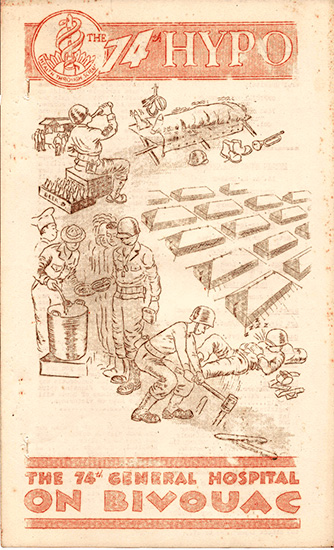
Cover of “The 74th Hypo” with a special article – On Bivouac. Courtesy Gregory Sobieski.
| Wilhite, Glaud W. | Wilkes, Ernest |
| Wilkinson, Donald C. | Williams, Charles M. |
| Williams, Delmage B. | Williams, John H. |
| Williams, Luther F. | Williams, Ora |
| Williams, Ronald H. | Wilson, Forrest E. |
| Wilson, Lowell C. | Withers, Lee T. |
| Witthrop, Clyde R. | Wofford, Homer A. |
| Wohner, William | Wold, Donald E. |
| Wolfinberger, Amos E. | Wood, John M. |
| Wood, Williams | Woodman, Claude L. |
| Wright, Lanier M. | Wrobel, Joseph J. |
| Wyatt, Jessie L | Wylie, Verne G. |
| Yahn, Nick F. | Yankeloff, Hyman S. |
| Yarborough, Brennan I. | Yochem, John E. |
| Young, Gilbert G. | Young, William G. |
| Zafonte, Frank J. | Zagrovic, Mike J. |
| Zimmerman, Willard E. | Zito, Frank J. |
| Zitterer, Sol | Zultowsky, Jack |
| Zywicki, Frank J. |

Signpost identifying 74th General Hospital Plant # 4165.
The MRC staff would sincerely like to thank the late Lynn F. McNulty who once more kindly furnished them with contemporary documents and photographs that have allowed the editing of this Unit History. We are furthermore truly grateful to Amy Fradel and Jane Ford, nieces of 1st Lieutenant Jane Fradel, ANC (N-761420 ) who served with the 74th General Hospital during WWII, for sharing some of the pictures used with above texts. We also must not forget Susan Klein Bagdade, daughter of Captain Samuel Klein (O-528135) who also served with this Hospital, and Heather Bigeck, Collections & Exhibits Manager, Joliet Area Historical Museum, Illinois, who kindly provided many vintage photos as well as a complete Personnel Roster of the 74th General Hospital. We must further include Gregory M. Sobieski, grandson of Technician 5th Grade William J. Schmiedl for sharing a number of “The 74th Hypo” Newsletters and very interesting pictures with us which allowed us to learn more about subject Hospital and its service in World War Two.
